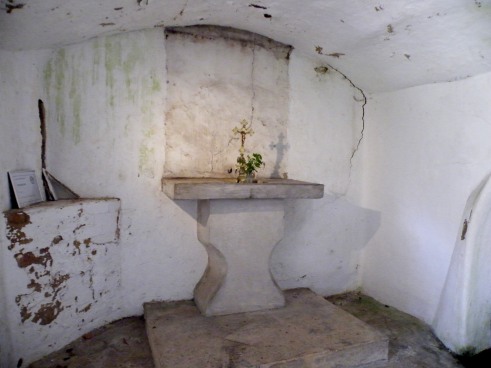To say that England has a lot to offer in terms of history, interest, and beauty surely is an understatement. We have been here in Norfolk now for several days, while it is mainly as a family visit, the family has generously shown us around the area, and we took a great, long walk along the salt marshes at Burnham Overy Staithe. How nice to get to see this and get acquainted with a variety of the birds and plants found in this habitat. I did hear a curlew, nice to hear as in Ireland they are heard less and less.
One of the main noticeable find here though are the what the houses are all built with lots of flint stones on their facades, no even all over the walls of the houses, I had never seen anything like it before and am fascinated. Flint is a very hard stone and those walls much be so strong and well able to endure the winds and weather in those areas. It is great to see locally sourced rock used as a building material. More information about the use of flint in Norfolk can be found here: http://belongathoughton.com/introduction-norfolks-natural-heritage/gallery ids=”13797,13790,13784,13792″ type=”rectangular”]
We took Ian’s grandchild and daughters on a steam train ride from Wells to Walsingham, the ride took us along many different wild shrubs and the berries were plentiful, among them hawthorn and rosehips. The birds will have plenty of food this winter! The train ride was quaint, lots of time to take in all we saw along the track.
The flowing fields along the railway track were beautiful to watch. Skies were also very interesting.
We had cream tea in a teashop at a place which is dedicated to the virgin Mary in memory of her visitation by the angel Gabriel. A pilgrimage from London to this village goes back a very long way. There is a well there with waters that are said to cure people. Mostly the place is very peaceful and beautifully laid out with lovely trees and flower beds. In mediaval time pilgrimage was very popular but people had to go a long way and the road was often not very safe. Today many people will visit places like these to get in touch with themselves and meditate on the meaning of their life.

https://www.walsinghamvillage.org/about/history-of-pilgrimage/






















How lucky am I that you share your travels with such great writing and wonderful photos…I know shall never see these sights, myself, but it seems I’ve now been there…love the wide fields. I always feel like I can breathe more easily in wide vistas. I had the same feeling driving up through Wyoming one summer…the wider the view, and the fewer the people, the lighter the load. Thank you, once again…sharing this now with others…
BTW…those stones are incredible…imagine the callused hands that placed them…
LikeLiked by 1 person
Thank you very much for your encouraging words and your appreciation Roxy, how lovely that you enjoy and tell us about your own experiences too which I love to hear. These flint stones are indeed sharp and hard, so well used by our ancestors as tools, but sharp to work with I think too. I brought away just two little ones, could not resist it 🙂
LikeLike
ha…I was a an archaeological dig once where I foolishly removed my gloves the better to dig out a piece of glass, and promptly sliced my hand -no sympathy from the site leader – so I pocketed the piece of glass to remind me to not be stupid..it has been on my mantel with other bits of rocks and drift would collected over the last 35 years… Good travels, my writing friend!
LikeLiked by 1 person
I know exactly what you mean Roxy 🙂
LikeLike
I enjoyed reading that history. Thank you for sharing the sights and stories of your travels.
LikeLiked by 1 person
You are very welcome Mary. I hope you are keeping well these days. I have not been reading any of my favourite blog entries the past two weeks, now I will catch up and read what you have got up to. Take care.
LikeLiked by 1 person
I am managing Agnes and grateful to be able to keep going. Spring is here and I am happy to see the garden looking good.
LikeLiked by 1 person
I am truly happy for you my friend.
LikeLiked by 1 person
Thank you, Agnes.
LikeLiked by 1 person
I don’t know Norfolk, so your post was a revelation to me, Agnes. I’m pleased you having an enjoyable time.
And isn’t it great that there is so much winter food for the birds!
LikeLiked by 1 person
Helen, I think you would love to discover Norfolk, I certainly did too.
LikeLike
It’s not too far so I think I will one day 😊
LikeLiked by 1 person
Lovely photos. We lived in Thetford in Norfolk for a couple of years and enjoyed our time there.
LikeLiked by 1 person
Thank you, and isn’t it a magical place!
LikeLiked by 1 person
It is – though I do prefer Ireland:)
LikeLiked by 2 people
I love visiting places of pilgrimage too – I like the sense that thousands of people have been here over hundreds of years (I also love those immortal yew trees). The Flint-walled houses are fascinating too. Thank you.
LikeLiked by 1 person
Thank you for your comment Emma. Yes I know exactly what you mean, and this place has been visited since the middle ages. A vicar I was talking with told me that during the past summer 30000 people had passed through.
LikeLiked by 1 person